Joan of Arc (1948 film)
6.6 /10 1 Votes
Duration Language English | 6.5/10 IMDb Genre Biography, Drama, History Country United States | |||||||||||||||||||||||||||||||||
 | ||||||||||||||||||||||||||||||||||
Release date November 11, 1948 (1948-11-11) (Premiere-New York City)September 2, 1950 (1950-09-02) (US) Writer Maxwell Anderson (play), Maxwell Anderson (screenplay), Andrew Solt (screenplay) Cast (Joan of Arc), (Pierre Cauchon), J. Carrol Naish (John, Count of Luxembourg), (La Hire), (Father Massieu), (Georges de la Tremouille)Similar movies A Time to Kill , Witness for the Prosecution , Inherit the Wind , Saint Joan , 12 Angry Men , In the Name of the Father Tagline Greatest of all spectacles! | ||||||||||||||||||||||||||||||||||
Joan of Arc is a 1948 American hagiographic epic film directed by Victor Fleming, and starring Ingrid Bergman as the French religious icon and war heroine. It was produced by Walter Wanger. It is based on Maxwell Anderson's successful Broadway play Joan of Lorraine, which also starred Bergman, and was adapted for the screen by Anderson himself, in collaboration with Andrew Solt. It is the only film of an Anderson play for which the author himself wrote the film script (at least partially).
Contents
- Plot
- Academy Award wins and nominations
- Production
- Reception
- Versions
- Differences between complete and edited versions
- Comic book adaption
- References

Bergman had been lobbying to play Joan for many years, and this film was considered a dream project for her. It received mixed reviews and lower-than-expected box office, though it clearly was not a "financial disaster" as is often claimed. Donald Spoto, in a biography of Ingrid Bergman, even claims that "the critics' denunciations notwithstanding, the film earned back its investment with a sturdy profit".
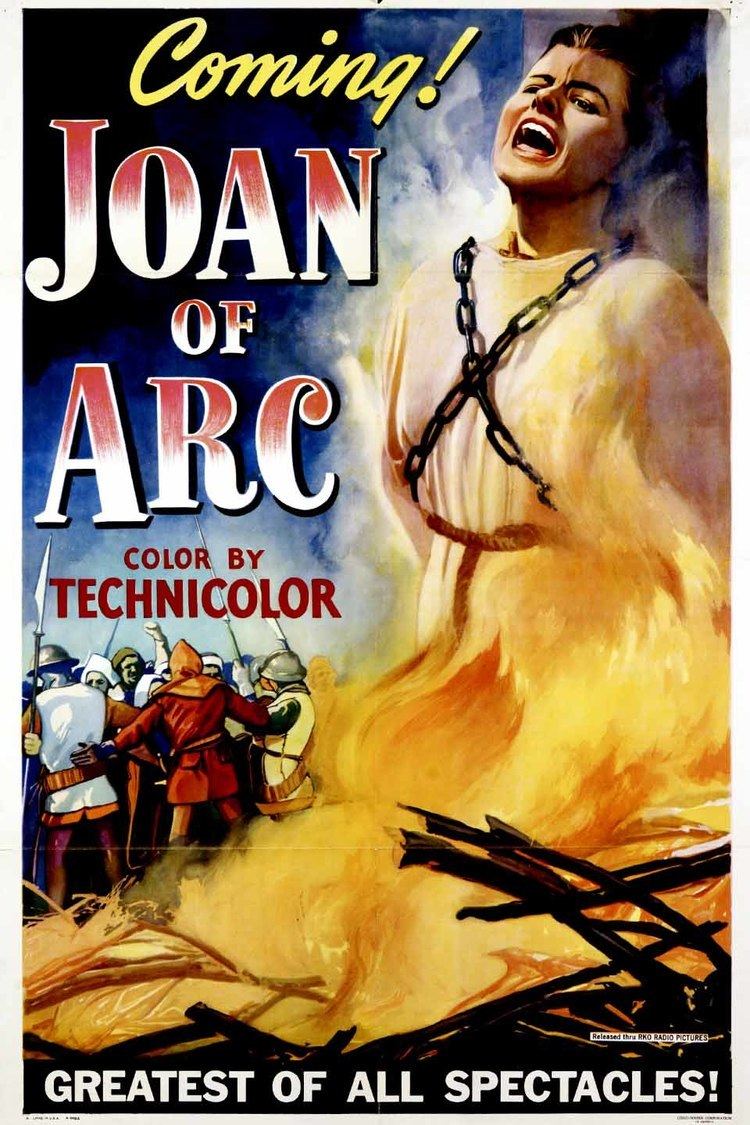
The movie is considered by some to mark the start of a low period in the actress's career that would last until she made Anastasia in 1956. In April 1949, five months after the release of the film, and before it had gone out on general release, the revelation of Bergman's extramarital relationship with Italian director Roberto Rossellini brought her American screen career to a temporary halt. The nearly two-and-a-half-hour film was subsequently drastically edited for its general release, and was not restored to its original length for nearly fifty years.
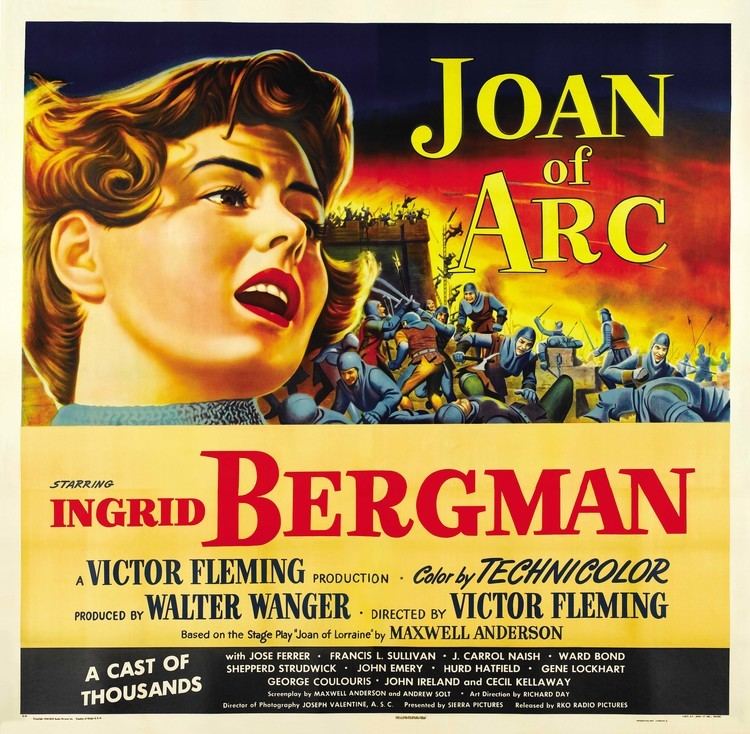
Bergman and co-star José Ferrer (making his first film appearance and playing the Dauphin) received Academy Award nominations for their performances. The film was director Victor Fleming's last project—he died only two months after its release.
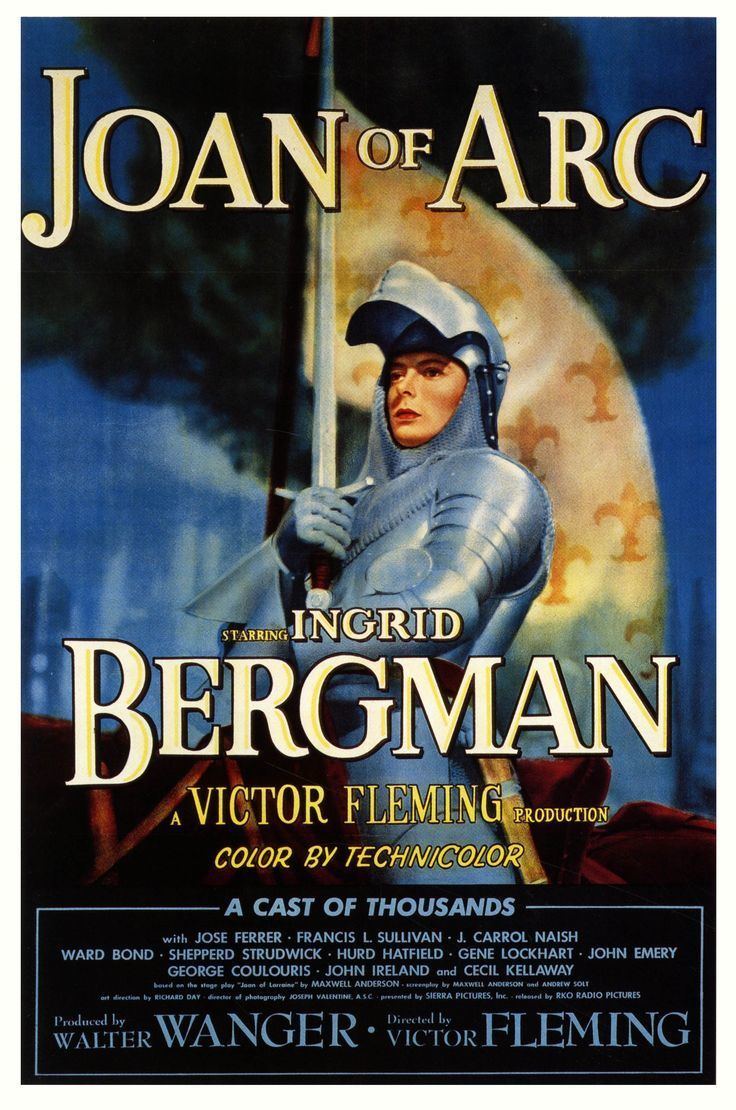
In Michael Sragow's 2008 biography of the director, he claims that Fleming, who was, according to Sragrow, romantically involved with Ingrid Bergman at the time, was deeply unhappy with the finished product, and even wept upon seeing it for the first time. Sragrow speculates that the disappointment of the failed relationship and the failure of the film may have led to Fleming's fatal heart attack, but there is no real evidence to support this. While contemporary critics may have agreed with Fleming's assessment of Joan of Arc, more recent reviewers of the restored complete version on DVD have not.
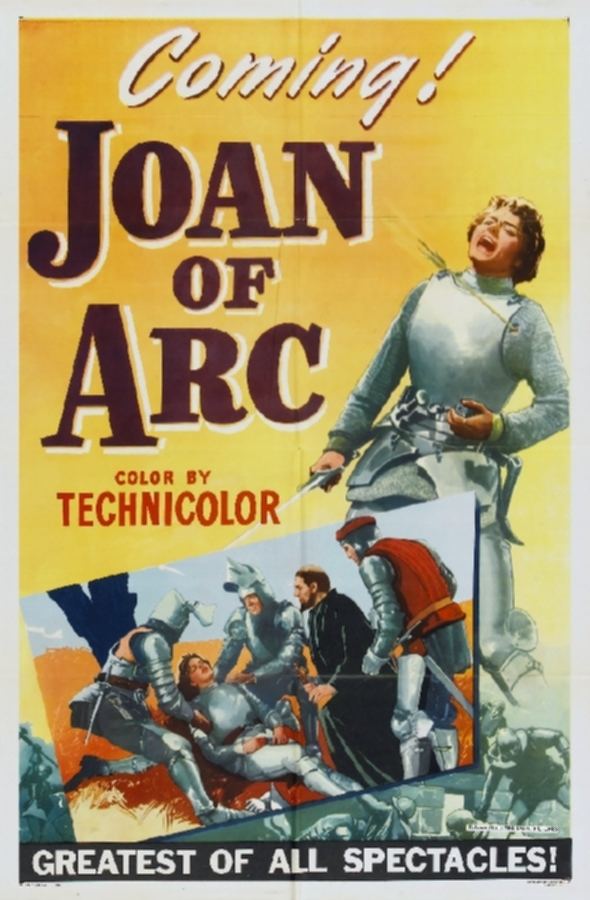
Plot
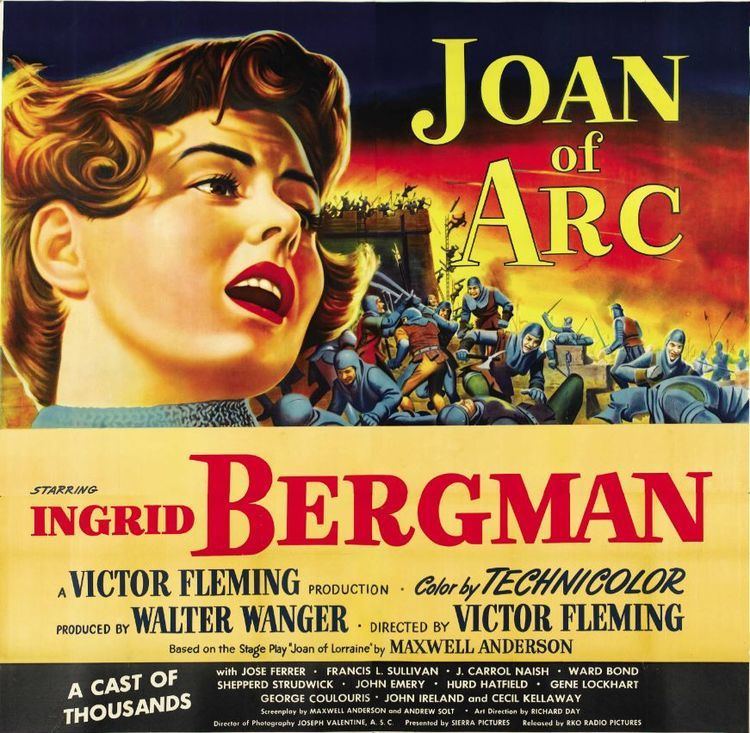
Unlike the play Joan of Lorraine, which is a drama that shows how the story of Joan affects a group of actors who are performing it, the film is a straightforward recounting of the life of the French heroine. It begins with an obviously painted shot of the inside of a basilica with a shaft of light, possibly descending from heaven, shining down from the ceiling, and a solemn off-screen voice pronouncing the canonization of the Maid of Orleans. Then, the opening page of what appears to be a church manuscript recounting Joan's life in Latin is shown on the screen, while some uncredited voiceover narration by actor Shepperd Strudwick sets up the tale. The actual story of Joan then begins, from the time she becomes convinced that she has been divinely called to save France to her being burnt at the stake at the hands of the English and the Burgundians.
Academy Award wins and nominations
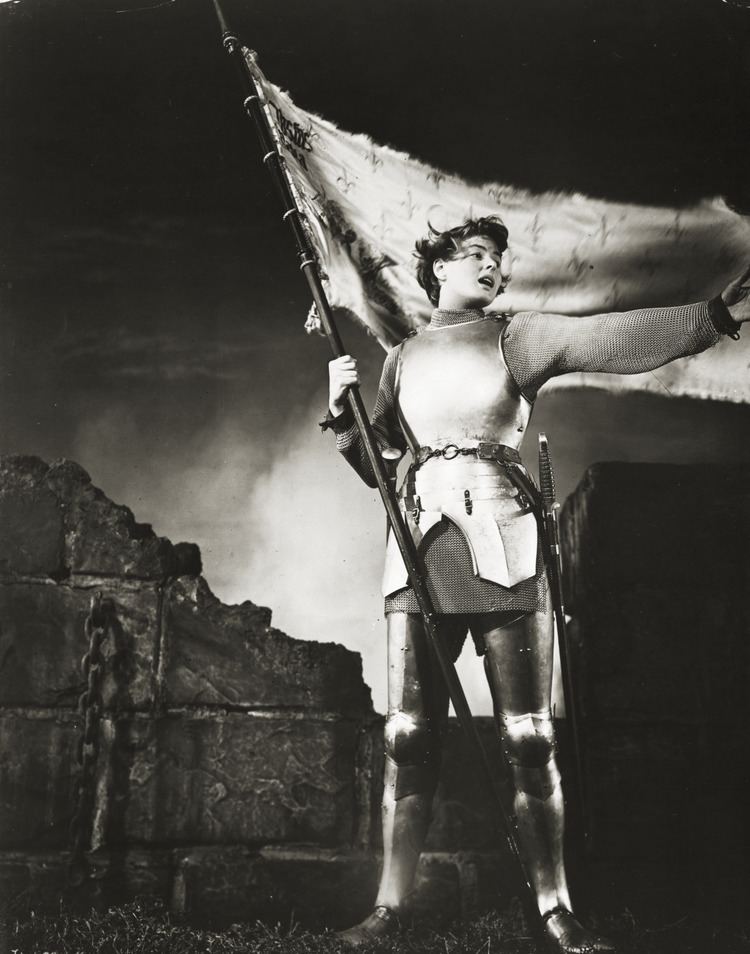
Production

Joan of Arc was made in 1947–1948 by an independent company, Sierra Pictures, created especially for this production, and not to be confused with the production company with the same name that made mostly silent films.
Filming began 16 September 1947 and was done primarily at Hal Roach Studios, with location scenes shot in the Los Angeles area.
The movie was first released in November 1948 by RKO. When the film was shortened for its general release in 1950, 45 minutes being cut out; it was distributed, not by RKO, but by a company called Balboa Film Distributors, the same company which re-released Alfred Hitchcock's Under Capricorn, also starring Ingrid Bergman.
The 1948 Sierra Pictures never produced another film after Joan of Arc.
Reception
One of the modern criticisms of the film is that Bergman, who was 33 at the time she made the movie, was nearly twice as old as the real Joan of Arc; the Swedish actress would later play her (at age 39) in a 1954 Italian film, Giovanna d'Arco al rogo (Joan at the Stake). However, reviewers in 1948 did not object to this; it was — and still is — common in for an older actress to play a teenager, as the twenty-four-year-old Jennifer Jones had in 1943's The Song of Bernadette, for which she won a Best Actress Oscar. Children were also sometimes played by older actors at the time; the sixteen-year-old Judy Garland had very convincingly played twelve-year-old Dorothy Gale in the 1939 film classic The Wizard of Oz, another film directed by Victor Fleming, and the nineteen-year-old Charlotte Henry had played Alice in Alice in Wonderland (1933).
Several contemporary critics criticized the film for being slow-paced and dialogue-driven, as does contemporary critic Leonard Maltin, who has not yet reviewed the full-length version; he has said that there is "not enough spectacle to balance the talky sequences".
The film was one of the biggest hits of the year earning $4.1 million in the US. However due to high cost it recorded a loss of $2,480,436.
The film is recognized by American Film Institute in these lists:
Versions
The movie was first released in November 1948 by RKO. When the film was shortened for its general release in September 1950, it was distributed not by RKO, but by a company called Balboa Film Distributors, the same company which re-released Alfred Hitchcock's Under Capricorn, also starring Ingrid Bergman. The complete 145 minute version of Joan of Arc remained unseen in the U.S. for about forty-nine years. Although the complete Technicolor negatives remained in storage in Hollywood, the original soundtrack was thought to be lost. The movie was restored in 1998 after an uncut print in mint condition was found in Europe, containing the only known copy of the complete soundtrack. When it finally appeared on DVD, the restored complete version was hailed by online movie critics as being much superior to the edited version. It was released on DVD in 2004.
The edited version received its first television showing on CBS on the evening of April 12, 1968 (an Easter weekend), and has been shown on Ted Turner's WTCG and on cable several times. Although the complete, unedited version of the film was scheduled to be shown on American television for the first time on February 13, 2011, by Turner Classic Movies, with a broadcast window of 2-1/2 hours, it was pulled and the 100 minute edited version was presented later, on Sunday, February 27. However, the full-length version was finally shown on Turner Classic Movies on March 13, 2011. This marked the first time that the complete unedited version had ever been shown on American television. It has now been shown several times by TCM and appears to have supplanted the edited version.
Differences between complete and edited versions
There are several differences between the full-length roadshow version of the film and the edited general release version.
The edited version might be considered more cinematic through its use of maps and voice-over narration to explain the political situation in France. (In the full-length version, Joan's family discusses the political situation during dinner.) The full-length version, although not presented as a play-within-a-play, as the stage version was, nevertheless resembles a stage-to-film adaptation, makes great use of Maxwell Anderson's original dialogue, and may seem, to some, stagy in its method of presentation, despite having a realistic depiction of the Siege of Orléans.
Comic book adaption
References
Joan of Arc (1948 film) WikipediaJoan of Arc (1948 film) IMDbJoan of Arc (1948 film) themoviedb.org
